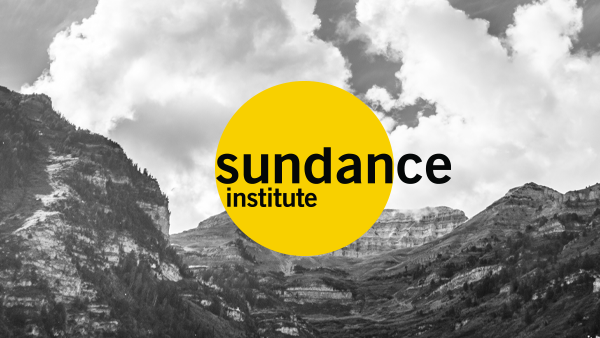Keri Putnam
This blog is via blackberry, written on the bus in an April snowstorm en route to Calgary for my flight home from an unforgettable week at the Sundance Institute Theatre Lab at The Banff Centre.
This same week I celebrated my one-year anniversary at Sundance Institute, and I can think of no more fitting way to have spent it than in the mountains among an exceptionally diverse and exciting group of new artists and Advisors collaborating to develop new work.
I had forgotten the breathtaking surprise of leaving Calgary for the climb up the mountain pass to Banff, as the Rockies emerge and then encircle the horizon as the trip continues. From every window of The Banff Centre where our Lab was held, a mountain view was framed. The sense of retreat was a great reminder of the feeling at Sundance Resort in the shadows of Mount Timpanogos.
The Banff Centre is an artists retreat with state-of-the-art facilities for our Theatre Lab, including fully equipped theatres and many wonderful rehearsal spaces. Some sense of the scale of it: our group of 90 playwrights, actors, directors, and dramaturgs didn’t even fill the living and working space! I was also able to tour the Centre’s film and music facilities which are similarly well equipped. The visit made me long for a government that supports the arts in a way that would allow for such a place.
I was able to observe the rehearsals and workshops for all eight pieces being developed. It was especially exciting to see the variety of the work: three musicals and five plays with wildly different styles and subjects. I won’t try to describe everything I saw, but one of many highlights for me was peeking into a rehearsal for a musical inspired by the true story of the Chinese delivery man who nearly died after days trapped in a New York elevator. It was entirely in song, more of an opera, and in form and content something I’d never seen before anywhere.
I was lucky enough to see presentations of three pieces: a musical direct from Tanzania where it began life in our Sundance Institute East Africa Lab, a work being developed by New York theatre group The Debate Society, and a new play by playwright Janine Nabers.
The African musical was particularly moving for all of us in the audience. It was performed largely in Kiswahili with music and dance and a mournful story of a man who lives and dies and embodies the corruption in Tanzania. It was brilliantly realized in collaboration with a talented British director named Indhu Rubasingham—another remarkable talent whose work I will now be following. The bridges being built between cultures extended not simply to the subjects being covered but also to the whole style of storytelling and theatrical process.
I hadn’t seen The Debate Society’s previous work, but I was bowled over by their process, which begins with a time, place, and tone they want to explore—in this case the World’s Fairs of 1893 and 1933—and builds character and narrative through improvisation. They arrived with no real written work, and after two weeks presented a pretty fleshed out work-in-progress—it was moving, funny, and utterly singular. I can’t wait to see it finished. I spent last night at the bar drinking whiskey with the three members of the troupe and learning more about them. Their approach reminds me of Mike Leigh in film—one of my favorites.
Janine Nabers’ piece is a raw, moving, and often funny story of mixed-race twins in their mid-twenties, raised in a privileged, white Houston neighborhood by their white mother who refuses to acknowledge their departed African American father. The play takes place post-Hurricane Katrina when Houston is confronting its own racism as displaced New Orleans residents are being housed in the city. Janine used the wonderful actors and the Lab process to dig into her play and completely rewrote the second act during the Lab. It was lovely to see a piece take shape in this way during a Lab.
The Lab, like all Sundance Institute Labs, is most remarkable for its sense of community, generosity, and risk-taking. It isn’t about the end product, but about chances: the chance to explore and develop, the chance to get feedback without any agendas beyond creative excellence, and the chance to be part of the Sundance Institute community that now stretches around the world.
After a week like this, and a year into the job at Sundance Institute, I can’t help thinking how lucky I am to have taken the chance to try this no-longer-new job, and to be part of this organization.




